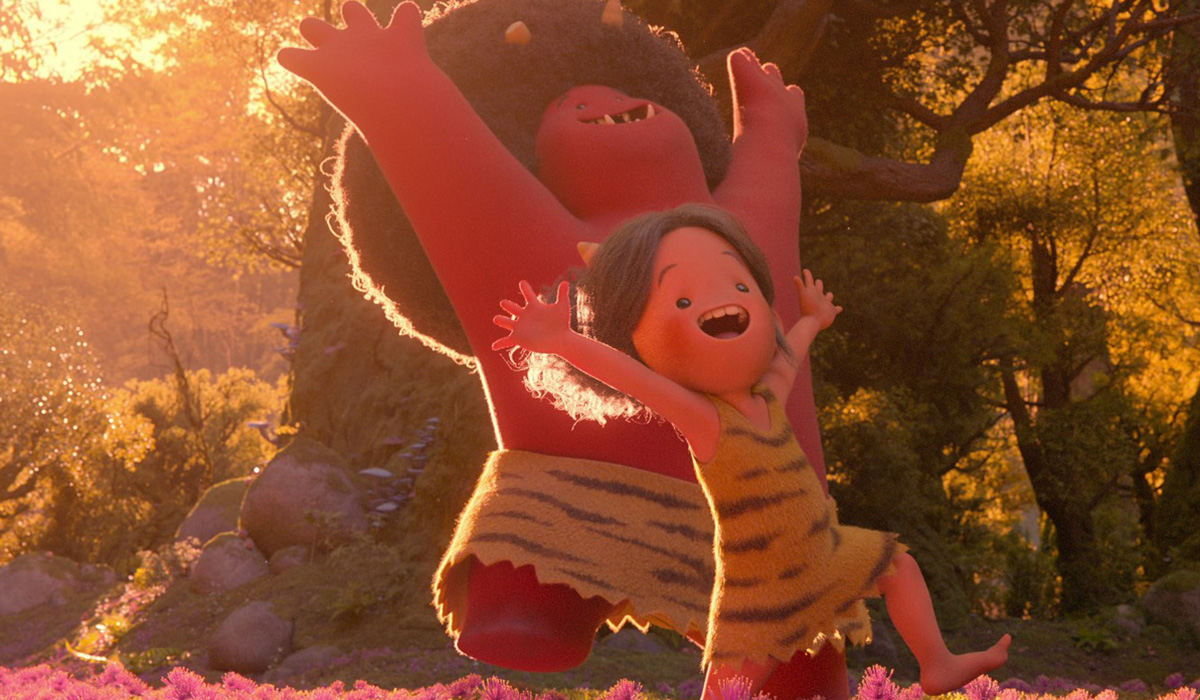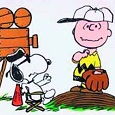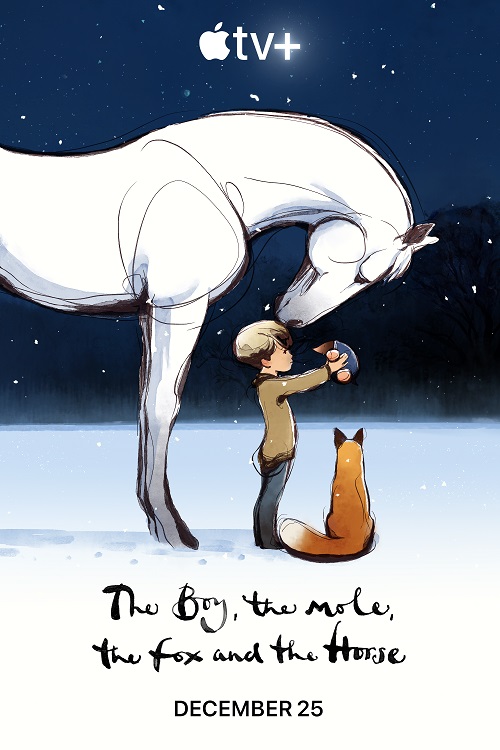 On December 25, Charlie Mackesy’s bestselling book The Boy, The Mole, The Fox And The Horse comes to life in a beautifully animated short in full color, with exquisite hand-drawn animation, available on Apple TV+. The poignant journey follows the unlikely friendship of the title characters while traveling together in the boy’s search for home.
On December 25, Charlie Mackesy’s bestselling book The Boy, The Mole, The Fox And The Horse comes to life in a beautifully animated short in full color, with exquisite hand-drawn animation, available on Apple TV+. The poignant journey follows the unlikely friendship of the title characters while traveling together in the boy’s search for home.
A film that can be watched by both young and old equally, it has the feel of something that can bring families together. “Obviously, our hope is that people will sit and watch it together,” says producer Cara Speller.
We had the chance to meet three of the creators of this magnificent film: Charlie Mackesy himself, producer Cara Speller, and co-director Peter Baynton.
British artist, illustrator and author Charlie Mackesy began his career as a cartoonist for The Spectator, before becoming a book illustrator for Oxford University Press. His award-winning work has featured in books, private collections, galleries, and public spaces around the world. His internationally bestselling book, The Boy, The Mole, The Fox And The Horse, was published in October 2019 and holds the record for the most consecutive weeks in the Sunday Times Non-Fiction Chart across all formats, as well as being the longest running Sunday Times Non-Fiction Number One of all time.
Cara Speller is an Oscar-nominated, Emmy-nominated, BAFTA-winning and triple Grammy-nominated producer, and serves on the Executive Committee of the Short Films and Feature Animation branch at The Academy of Motion Picture Arts and Sciences. She was best known for her work with Damon Albarn and Jamie Hewlett on their animated band Gorillaz, with responsibility for the visual side of the band. She also developed and produced a slate of projects including Robert Valley’s Oscar-nominated and Annie-winning film Pear Cider And Cigarettes; the Emmy-nominated Marvel’s Rocket & Groot and Marvel’s Ant Man; Zima Blue and the Emmy-winning Ice from Tim Miller and David Fincher’s critically acclaimed anthology series Love, Death and Robots for Netflix; and 101 Dalmatian Street for Disney Channel. In 2020, she teamed up with Charlie Mackesy to form a new film and television production company, NoneMore Productions, to develop multiple projects based on the world of Mackesy’s books.
And Peter Baynton has been directing animated shorts, music promos and commercials for 14 years, and has picked up over 30 awards at film festivals around the world along the way, including an Annecy Crystal in 2013 and a couple of British Animation Awards. After years of making shorts and commercials, in 2015 he decided to follow his heart and pursue longer form animation, working as a storyboard artist on the BAFTA-winning CBeebies show Sarah & Duck, and then as 2D Animation Director for Paddington 2. In 2019 he was Animation Director for C4’s Emmy award-winning The Tiger Who Came For Tea. After directing The Boy, The Mole, The Fox And The Horse, he’s now in the early stages of directing a feature film for Lupus Films Ltd, to be released in 2024.
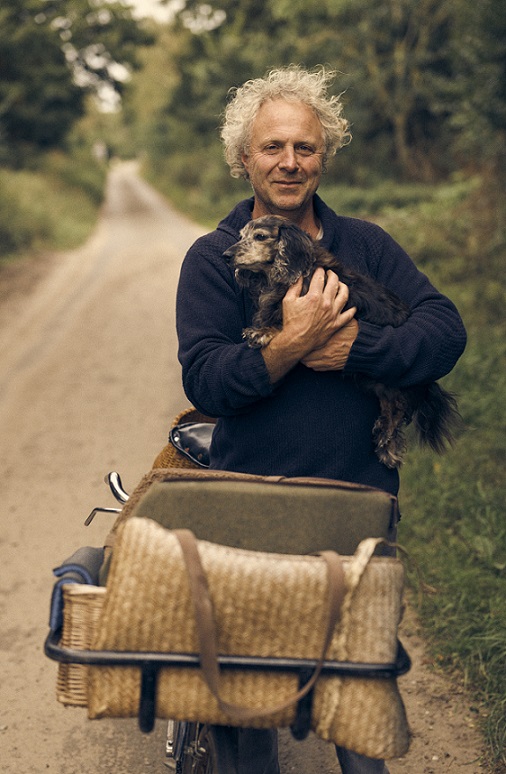
Animated Views: Before talking about the film, can you tell me about the creation of the book?
Charlie Mackesy: When I first started drawing, it wasn’t really at school. It was when I left. When I was 19, I worked on a boat, and got left on the Île de Ré, off La Rochelle, France. All I had was paper and pens and I drew a lot on that island. What I loved is that the French have a completely different response to artists than the English. When I sat on pavements in Saint Martin or La Flotte, all these places around the island, they talked to me, gave me cups of tea and were very encouraging. And that attitude sounded deep into my psyche and soul. Now, fast forward to 2019, at the beginning, three years ago, it was just drawings I did for friends who were having a difficult time. Then, I put them on Instagram, and Instagram followers reacted in a very explosive way. As I respond well to encouragement – I don’t have much self-belief – I went on doing those drawings for a year and a half, and then exhibited them, and then there was a publisher who came to the exhibition, and encouraged me to make a book. I made it, and I was very surprised it had again such a response. Six months after that, I was approached by filmmakers, many of them, and notably Cara, and we chose her as the head of it all.
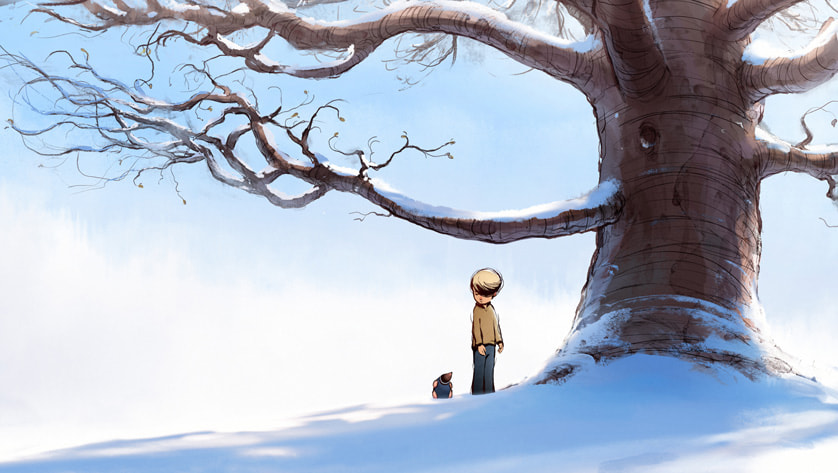
AV: How did you come to choose your characters to tell this story?
CM: I’ve always drawn people, I used to draw big scenes, some with mothers and children. So, the boy was already in my head. But I’ve already loved moles, too. One of my favorite books is The Story Of The Little Mole Who Knew It Was None Of His Business. As for horses, my sister is a horse trainer. And foxes used to come around in my garden. So, there’s all these creatures around my head. I began drawing them a bit and then, one day, I’m not sure why, they decided to speak to each other. I think, as an artist, I’ve always felt frustrated because fine art is without words, just image, and I like words too much to ignore them. So, I wanted to marry the two. This felt right. That’s how they began talking, and every time I woke up in the morning, I had another question the boy might ask. For the mole’s obsession with cakes, I’m not even sure where that came from. The horse felt very strong and gentle and wise. The thing is that all the creatures came out for no real reason. They were never meant to be a book; they certainly weren’t meant to be a film. It just sort of arrived.

AV: Cara, how did you discover the book, and how, as a cinematographer, did you get to want to make a film out of it?
Cara Speller: I discovered the book like many people, after it being published. That was about November 2019. I think I saw it on Amazon first. I bought it without knowing anything about it, because the illustration on the front cover was so peaceful, so lyrical and so poetic. I didn’t even know whether there were any more illustrations inside the book, or whether it was a written story, a more traditional story. Then, of course, I received the book and loved it, and really felt like there was so much material in there that could adapt into a more cinematic piece. So, I immediately tried to get in touch with Charlie and his partner Matthew Freud for it. I ended up having a very lovely meeting with them talking about the possibilities, and how I thought this could work. And it was always really important to me right from the start that Charlie be at the center of any team that we put together to make the film. You can tell immediately from the book that he has incredibly strong instincts about what works. To me, it didn’t make any sense to try and make that without having him so closely involved.
CM: I wouldn’t have let you! (laugh)
CS: True, but I didn’t know that at the time. I just felt that you needed to be at the core of it. Then, we put a team together, and created NoneMore Productions because we needed a production company in order to make the film in the first place. Of course, we hope that there will be many more projects after this one. We’re waiting to see whether people enjoy the film and want to see any more…

AV: How did you build your crew?
CS: It was a very international crew, coming from 20 different countries. We started the work on the film in the middle of the pandemic, so everyone was working remotely from their homes. We built the team in the same way you build any team on a production. You’re always looking for the most talented artists you can find; it doesn’t matter where they are in the world, as long as you think they’re the right fit for the project and for the team.
It’s been a phenomenal effort from so many people. We’ve had 120 artists working on it around the world. And each of them has gone above and beyond in every imaginable way. Hopefully you can actually feel that in the finished work – the love and commitment that has been poured into it.

AV: Peter, how did you manage to translate Charlie’s unique visual style into animation?
Peter Baynton: Well, Charlie’s drawing is underpinned by a great knowledge of anatomy. So, even though he draws extremely quickly and quite impressionistically, you can tell he knows horse or boy or fox anatomy so well. For the mole, it’s a little bit different.
And on top of it, he has this beautiful, lyrical, free-flowing line. So, the challenge was trying to find a way of drawing the characters that enabled us to nuance performances that could communicate the subtle emotions that we wanted to express. It was important not to lose that lovely loose quality and make things stiff. So, we came down to a system where we would animate quite tightly on detailed models, and then, on the ink stage, we encouraged the artists to find that looser way of inking. It was about finding that very fine line that sort of drifts around the characters. That came sort of through experiment, how they should behave. Sometimes we found that they felt too stiff and became worried it didn’t do justice to the way they are in Charlie’s drawings. Other times, they became too lively and like they were taking on lives on their own. So, we had to find a happy balance with how they behave.
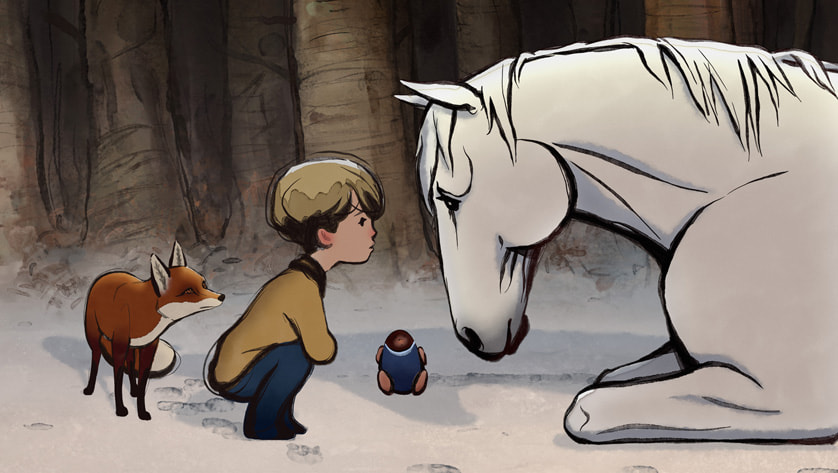
AV: Speaking of performance, how did you manage the different designs of the characters?
PB: I think it’s one of the very remarkable and noticeable things in Charlie’s book, one of the first things I remember, where you have these very realistic and well-proportioned horse and fox and child, and then this strange, little, graphic mole with tubular circles on this black triangle nose. Like a little doorstop. It’s a very charming aspect of what Charlie created, that sort of contrast. In order to animate, we went back to the book, and developed that naturalistic, as non-cartoony as possible approach for the boy, the fox and the horse, and then a bolder animation for the mole.
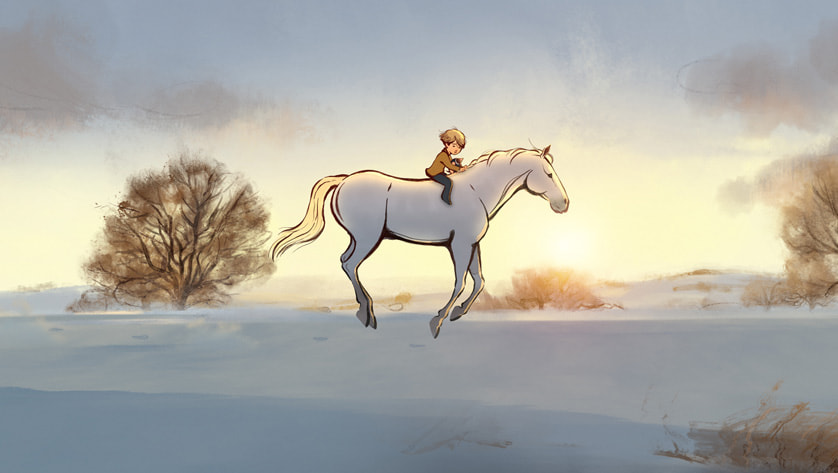
AV: The score by award-winning composer Isobel Waller-Bridge echoes both the emotions of the characters and the sounds of nature in a particularly subtle way.
CS: Actually, sound design and music were made at the same time; this was all happening together. We started working on the soundtrack about six months before we finished the film. Every time we were updating cues or sequences in the film, both Isabel and our sound designer Adrian Rhodes were getting updated cuts of the film and understanding how the two things had to work together.
CM: To answer your question, I would start by saying that even though the film looks quite cute and cuddly, the messages are not. The point is it’s for adults, too, not just children. Had it been aimed just to children, the music would have been very different. We had to make a score that would address people of all ages and experiences, and fit with the landscapes and the messages and the content. So, the score can feel serious or profound in a way that it wouldn’t have been otherwise. If you saw a still from the film, you might imagine a music to be quite childlike. The point is – I don’t think it is. Isobel Waller-Bridge was a fan of the book way before the film, and helped us with the audio-book. She had a deep sense of what was needed for the messages to land for an adult as much as for a child. She was extremely intelligent, and very humble. And those two things make a very profound combination for making such a score, because she listened to us and made changes very rapidly. Because we’d been making the film a long time before she arrived, even though she knew the book, there were things we were trying to say that she had to sort of catch up with. In the end, I think she did an extraordinary job going from liberty to pathos to liberty to pathos, and balancing between them. That’s an essential part of the charm of the film, along with the visuals.

AV: How would you like people to feel after watching The Boy, The Mole, The Fox and the Horse?
CM: I hope they’ll feel better. Or more hopeful. Or lighter. I hope they’ll feel… comforted.
Charlie Mackesy’s book The Boy, The Mole, The Fox and The House is available to order from Amazon.com!
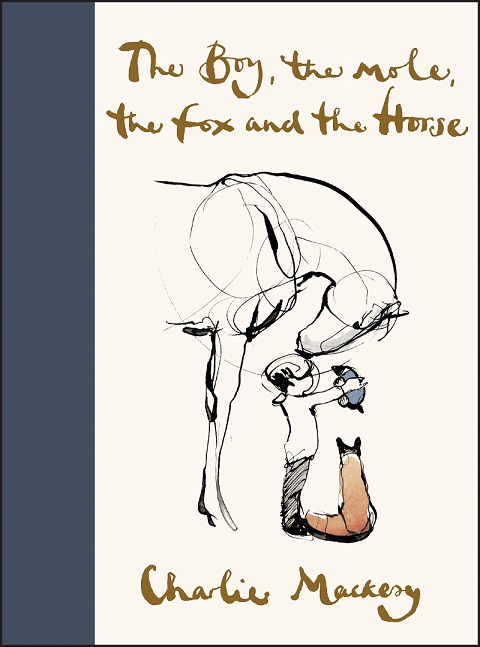
With our thanks to Fumi Kitahara, Charlie Mackesy, Cara Speller and Peter Baynton.




